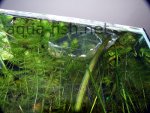Comprehensive Guide to Acclimatizing Aquarium Fish: Best Practices for a Healthy Transition
Quick Links - Acclimatization Tips
Brief Description
This guide covers essential steps for properly acclimatizing aquarium fish and ensuring a smooth transition into their new environment. For additional questions, feel free to ask in our forum below.
Why Acclimatization is Important
Acclimatizing your aquarium fish is crucial for their health and well-being. Many experienced aquarists may skip this process, thinking their fish will adapt quickly, but doing so can lead to stress, health problems, and even premature death. Fish need time to adjust to differences in pH levels, water hardness, temperature, and other factors that may differ significantly from their previous environment.
One of the most common issues is pH shock. Even small changes in pH can stress fish. For example, a fish coming from water with a pH of 7.2 that is placed directly into water with a pH of 7.6 can suffer shock, weakening its immune system and leading to illness. Acclimatizing fish gradually helps prevent this and other stress-related issues, improving their chances of long-term survival.
Fish Species and Acclimatization
Different species of fish handle water parameter changes in different ways. Some fish, such as Guppies, Zebra danios, and Platies, are considered hardy and can tolerate slight fluctuations in pH or temperature without much difficulty. These species are often recommended for beginner aquarists.
On the other hand, fish such as Discus, Neon tetras, and Ram cichlids are more sensitive to changes in water parameters. These species require precise acclimatization to avoid stress, disease, or even death. Sensitive fish are also more prone to developing conditions like ich or fin rot when exposed to sudden temperature or pH changes.
Temperature Adjustment
Temperature is another critical factor when acclimatizing fish. A sudden change in temperature can stress fish and cause shock, weakening their ability to fight off diseases. Always balance the water temperatures between the transport bag and your aquarium before adding new fish to their new home. Proper acclimatization takes only a little extra time but significantly benefits your fish’s health.
Acclimatizing Fish in the Bag
One of the simplest methods of acclimatizing fish is by using the bag they were transported in. Here's a step-by-step guide:
Preparation:
- Before picking up your new fish, do a large water change in your tank and ensure the water parameters are at high quality.
- Turn off your aquarium lights to avoid startling your new fish. Bright light can add to their stress, especially while floating in a clear bag.
Transporting Fish Safely:
When purchasing fish, ensure the supplier uses a double-bag system, especially for species with spines. The bags should contain enough air at the top for oxygen exchange during transit. Keeping the bag in a dark paper or plastic bag can also help calm the fish during transport.
Once home, float the unopened bag in your tank for at least 20 minutes to equalize the temperature. Afterward, slowly add small amounts of tank water to the bag every 10 minutes. This gradual mixing process allows the fish to adjust to the new water chemistry. Remove water from the bag periodically and continue this process until the water in the bag is mostly replaced by aquarium water.
When ready, gently net the fish and add them to the tank. Avoid pouring the bag’s water into the aquarium as it may contain waste and contaminants from transit.
The Drip Line Method
The drip line method is highly effective for acclimatizing sensitive or delicate fish. Although it takes more time, it offers a gentle transition into the new environment.
Materials Needed:
- Airline tubing
- Flow regulator valve
- A small, clean food-grade bucket
Step-by-Step Drip Line Process:
- Place one end of the airline tubing in the tank and secure it with a clamp or clip.
- Start a siphon, and adjust the flow to one drop per second using the valve.
- Place the fish and transport water into the bucket and allow the tank water to drip slowly into the bucket.
- As the water level rises, remove small amounts of water from the bucket to avoid overflow.
- Continue the drip process for about an hour, then gently transfer the fish into the tank using a net.
Acclimatizing Fish During Quarantine
Even when quarantining new fish, acclimatization is crucial. The water in your quarantine tank will differ from the fish’s original environment, and they need time to adjust. Following the acclimatization process helps prevent stress and reduces the risk of disease outbreaks.
Never rush the acclimatization process. Keep your fish as calm as possible by dimming the lights, and observe their behavior to determine when they are ready to enter the tank.
Feeding Tank Mates Before Adding New Fish
Before introducing new fish into your aquarium, it’s a good idea to feed the existing tank inhabitants. Well-fed fish are less likely to exhibit aggressive or territorial behavior toward newcomers. In some cases, particularly with predatory or territorial species, hungry fish might mistake new arrivals for food or become overly aggressive.
Feeding tank mates beforehand helps minimize aggression and gives the new fish a better chance to settle into the tank without being harassed. Ensure all fish are calm and distracted when the newcomers are introduced, allowing for a smoother integration.



